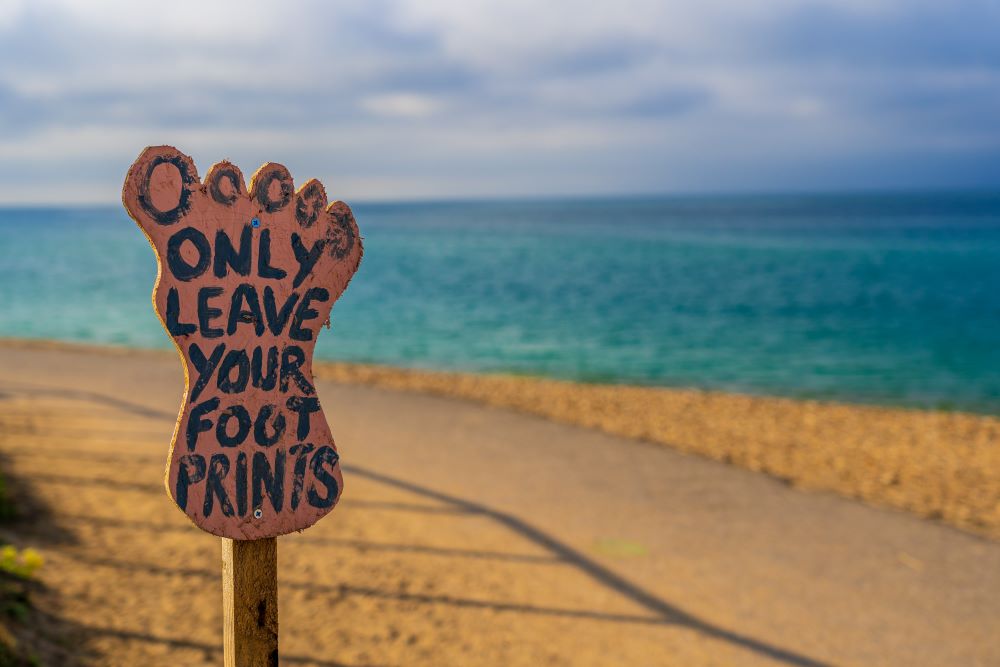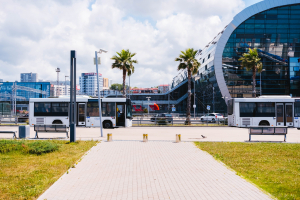While the pandemic of Covid-19 had a severe negative impact on the events industry, with the cancellation of all in-person events for most of 2020 and parts of 2021 in some places, there is no denying that it had some positive impacts on the environment. With no air travel allowed for months, lockdowns, and the slowing down of economic activities, there have been marked improvements in air quality, as well as lower water and noise pollution or greenhouse gas emissions.
Another impact of COVID-19 is that it has been on everybody’s mind for the past 18 months. Companies have been focused on ensuring the health and safety of employees and clients, and virtual events have been at the forefront to mitigate the fact that physical events were banned in most places.
But with wildfires raging in North America, Europe, and North Africa, and other extreme weather phenomena such as hurricanes or heat waves getting more frequent and deadly, it’s safe to say that nobody can escape from thinking or hearing about the environment. As a result, people are becoming more environmentally conscious and even willing to pay more to ensure the products they buy are sustainable and the companies that sell them adopt greener policies.
And the inevitable return of physical events means that the issue of sustainability will also come back to the forefront of event planners’ considerations.
In this article, we are going to share with you some tactics to help you reduce the impact of your event for the biggest culprit of all, travel and transportation.
The events industry and the issue of sustainability
The events and meetings industry is generally considered very wasteful and not environment friendly, with a large carbon footprint.
A study by MeetGreen and Event Manager Blog shows that a conference attendee typically produces 1.89KG of waste per day, 1.16KG of which goes directly to a landfill. The same research has also shown that the three main problem areas are travel, accounting for 84% of the carbon footprint of a national event in the US, followed by energy with 12%, and food & beverage with 3%.
If we dig a bit deeper, air travel accounts for 70% of the carbon footprint, followed by car travel with 10%, and train with 4%.
For event planners, this is by far the biggest and most difficult challenge to tackle. Indeed, attendees have to travel for most events, sometimes internationally, in the case of major conferences and trade shows. For example, if an attendee books a round-trip flight between New York, where he lives, and San Francisco, where your event takes place, that trip will emit 1.4 tons of carbon dioxide. This is the equivalent of the emission of an average car if used daily for three months!
We can all agree this is a colossal number, and whatever small step you take to improve the situation will help to make your event more sustainable.
Here are a few avenues to look into.
Consider where your event will take place
Taking into account where the majority of your participants will be coming from can help you choose a central location, which will help lower the amount of travel necessary to get to your event. But, of course, this will not always be possible, as events such as CES usually always take place in the same location year in, year out.

Photo by Anete Lūsiņa on Unsplash
If you have the option, try and organize local or regional events. These might be smaller, but they will allow you to get local talents, which comes with two benefits: they are more attractive to a local audience, and they don’t have to travel to your event (which, coincidentally, might also help you if you have to work with a lower budget)!
Your choice of venue is also essential. If you pick one that can double as accommodation, that should significantly lower any transportation needs. Even better if the venue/hotel is within walking distance of the destination’s main attractions!
Promoting public transportation and safe, walkable routes could also be a step in the right direction.
Widen your choice of transportation options
Sometimes, you have no other option than to transfer a lot of people from one place to another. In that case, you can reduce the number of flights or trains necessary to get people to and from your event by coordinating travel from major cities, for example, by organizing chartered transportation.
Photo by Igor Starkov on Unsplash
Carpooling and shuttle options can also be considered, especially if you can find services using electric or hybrid vehicles. To make carpooling more attractive, offer discounts (or even free) parking options for full vehicles at your event location.
Most importantly, communicate heavily on these greener means of transportation so that attendees don’t need to look for the information themselves. Make it convenient for them to make green choices!
Use technology to your advantage
MeetGreen calculated that by holding the UN Global Compact Uniting Business Live 2020 event virtually instead of in-person for three days in New York, the organizers managed to reduce the CO2 emissions from 1,153,291 KG to 16,798 KG! The difference of 1,136,493 KG of CO2 emissions is comparable to the energy-related CO2 impacts from 192 homes over a year.
Obviously, not all events fare that well virtually (trade shows are a good example), but many can offer live streaming for participants who can’t or won’t attend in person.
Compensate your carbon emissions
As we’ve seen, some events can’t be held locally or virtually, and you have, therefore, no other option than to rely on some kind of transportation. However, that doesn’t mean you are doomed and can’t go greener. Carbon offsetting is one of the best options you have, and there are several initiatives that can help you with it.
At totm exposition, we chose to plant trees to offset the greenhouse gas emissions of our company’s activities and to reduce our carbon footprint. We also minimize our impact on the environment by taking concrete steps to maximize the recycling of our materials.
In conclusion
There is no perfect path towards sustainability. Each industry has its own issues, and it’s essential to start your journey towards greener events by understanding your main sustainability problems.
The way to improvement requires setting attainable objectives and targeting your primary source of waste or carbon emissions, i.e., travel most of the time. We’ve seen some tactics to help you with that issue, and if you keep track of your efforts and measure how far you’ve come, you’ll be well on your way to more sustainable events.
Author: Veronique Colombani


